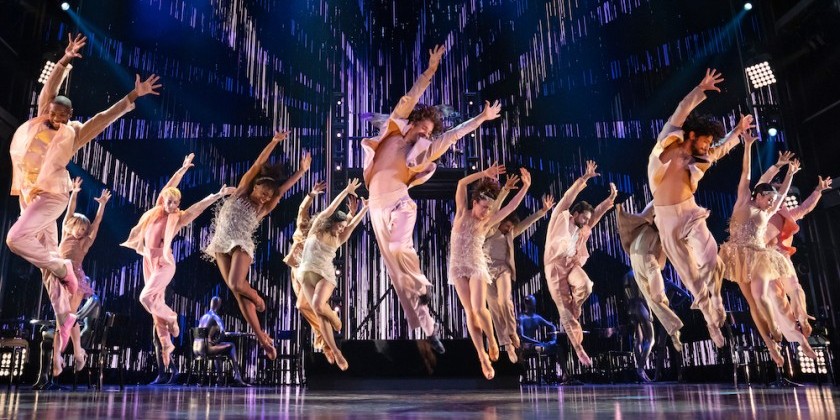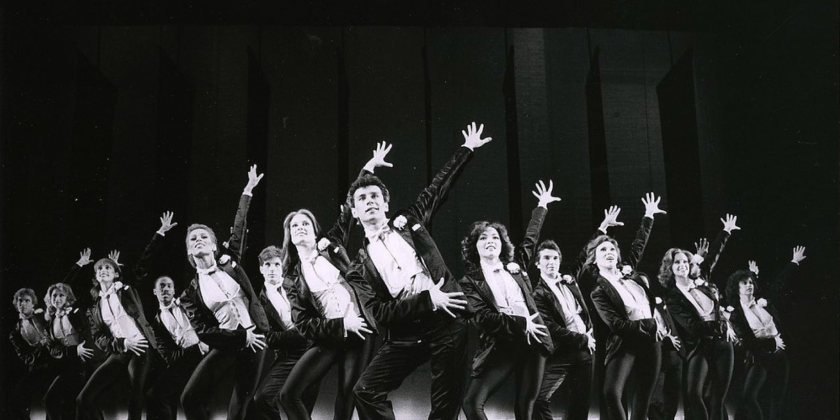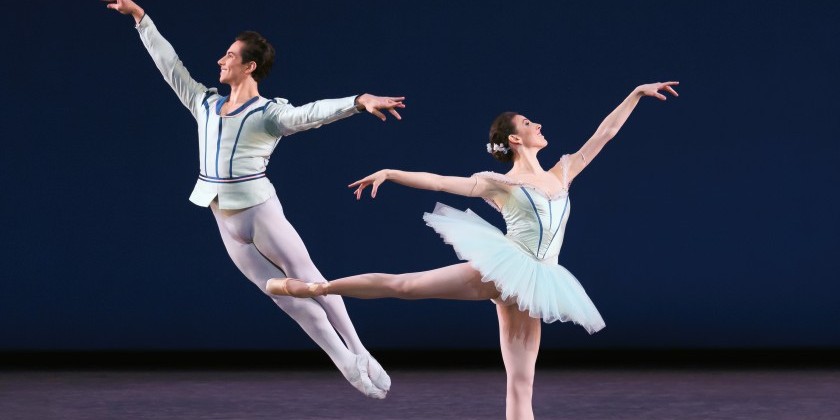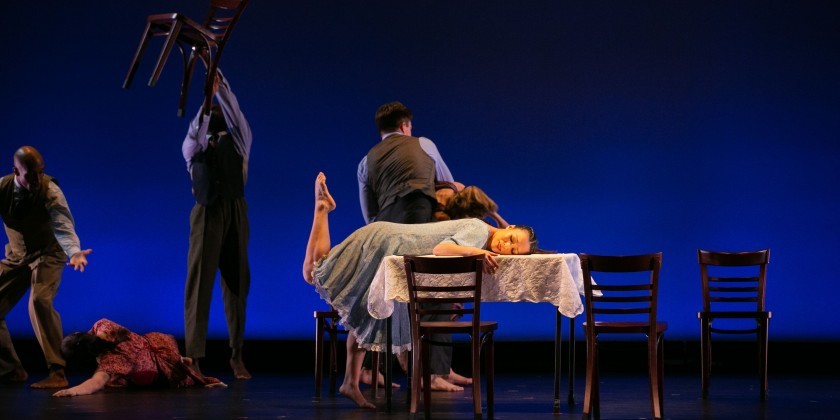IMPRESSIONS: A Diverse Cast of Broadway-Dance Phenoms Ignites "Bob Fosse’s Dancin’," Directed by Wayne Cilento

Direction and Musical Staging: Wayne Cilento
Choreography: Bob Fosse // Reproduction of Mr. Fosse’s Choreography: Christine Colby Jacques
Additional Choreographic Reproduction & Associate Director/Musical Stager: Corinne McFadden Herrera
Orchestrations, Music Supervision, Vocal & Incidental Music Arrangements: Jim Abbott
New Music & Dance Arrangements: David Dabbon // Music Director/Conductor: Justin Hornback
Music Coordinator: Kimberlee Wertz
Scenic Design: Robert Brill // Costume Design: Reid Bartelme & Harriet Jung // Lighting Design: David Grill
Sound Design: Peter Hylenski // Video Design: Finn Ross // Hair & Wig Design: Ashley Wise
Makeup Design: Suki Tsujimoto //Text Consultant & Additional Material: Kirsten Childs
Performed by: Ioana Alfonso, Yeman Brown, Peter John Chursin, Dylis Croman, Tony d’Alelio, Jovan Dansberry, Karli Dinardo, Aydin Eyikan, Pedro Garza, Jacob Guzman, Manuel Herrera, Afra Hines, Gabriel Hyman, Kolton Krouse, Mattie Love, Krystal Mackie, Yani Marin, Nando Morland, Khori Michelle Petinaud, Ida Saki, Ron Todorowski, Neka Zang
Opened on Broadway at the Music Box Theatre, March 19, 2023
You won’t see any spanking new or totally unfamiliar choreography by Bob Fosse in this spring’s electrifying revival of the 1978 Broadway musical Dancin’, a plotless collection of dance sequences created by Fosse to music by a multi-genre array of composers. Granted, this Broadway revival — re-titled Bob Fosse’s Dancin’ — resuscitates an episode that was cut from the original during its Boston tryouts, and incorporates excerpts from dances Fosse created for other shows. But the bulk of its choreography will be recognizable to Fosse fans, as it has been video-recorded, can be viewed on YouTube or elsewhere, or was reproduced in the 1999 Broadway retrospective Fosse.

So, what makes this dazzling revival a must-see event is its beautifully-diverse cast of phenomenal dancers -- though one could argue that they’re phenomenal performers because of Fosse’s choreography. It’s often said that Fosse was “a dancer’s choreographer” and this production certainly illustrates that. Interpreting Fosse’s work is so challenging in terms of the specificity of its physical vocabulary and internal motivating impulses that it forces dancers to evolve into more meticulously-coordinated and dramatically authentic performers.
The dancers in this revival are ensnaring to look at, and not because they possess gorgeous physical instruments. Collectively, their bodies lack the sort of uniformity that makes for impressive unison dancing and few exhibit the thin, elongated linearity of the typical dancer’s body. Some are fleshy, lanky, squat, bearded, hippy, or not classically proportioned, and they represent a wonderfully wide spectrum of ethnicities, colors, facial features, and gender identities. Yet when embodying Fosse’s work, each one is entrancing.

Moreover, their diversity demonstrates how a singular piece of Fosse’s choreography can propel the artistry of radically different performers. A striking example is the Trumpet Solo from the jazzy “Sing, Sing, Sing” sequence, ravishingly danced in the original production by Ann Reinking. The flashy solo was made to showcase Reinking’s long graceful legs, balletic elegance, and shimmering sensuality. But here it’s performed with a novel ferociousness by Kolton Krouse, whose heavily-muscled legs, deliciously deep back-bends, knock-‘em-dead kicks, and in-your-face non-binary gender expression couldn’t be more unlike Reinking. Krouse takes ownership of the dance, giving an authoritative performance that stands out as a highlight in a show filled with stellar dancing.

Other highlights include the ensemble’s polished execution of “Dancin’ Man” (Fosse’s stylish tribute to Fred Astaire), Dylis Croman’s beguiling acting bits and poignant vocal and dance rendering of “When Johnny Comes Marching Home,” the pert sexiness Mattie Love evokes with the tiniest of actions, and every moment Manuel Herrera is onstage. Herrera’s dark penetrating eyes project a magnetic intensity, and work like laser beams to give the movements of his thick body a knife-like focus. Similarly charismatic is Fosse-look-alike Jacob Guzman. He’s light-footed, wiry, hunched, goateed, and mysterious, yet puts his own stamp, a natural weightlessness, on his rendering of Fosse’s decidedly grounded style. The gentle tap duet he and Herrera perform in “Sing, Sing, Sing” is sublime.

With direction and musical staging by Wayne Cilento — a Tony Award nominee for his performance in the original Dancin’ — this first-ever revival of the episodic show is marred only by some structural problems resulting from how it cuts, adds to, and shuffles the order of the dances that comprised the 1978 version. Most annoying is the insertion of snippets of well-known Fosse dances from other productions, such as Broadway musicals Sweet Charity (1966) and Pippin (1973), the movie Kiss Me, Kate (1953), and the TV special “Liza With a Z” (1973). It’s not clear what is gained from this “Fosse’s greatest hits” medley, as it lends a hodgepodge quality to the proceedings. With some sequences running close to twenty minutes, and others under three, the show as a whole has no over-arching rhythm and can feel disorienting.

Adding to the confusion is the over-costuming of the dancers by designers Reid Bartelme and Harriet Jung. Fosse’s choreography is built largely of small movements that speak volumes — isolated shoulder rolls, pulsating rib cages, circling pelvises, wrists, and ankles, turned-in knees, slumped or exaggeratedly-arched spines, and punctuating off-kilter jumps — so it’s best appreciated when body parts are clearly visible. Simple, tight-fitting attire is, perhaps, the ideal Fosse costuming. Yet here the dancers start out clad in multitudinous styles of leotards, all with dizzying cut-outs and draped with layers of see-through fabric that fly around distractingly.
For each new number, the dancers change into new outfits — some quite elaborate, as they mirror costumes originally worn in the many different musicals from which the sundry dance excerpts are drawn. The problem is that some of the dance segments are so short that the performers appear to be running offstage, throwing on a new costume, and running back on again every few seconds. We ‘re overloaded with visual stimuli that we don’t have time to meaningfully process.

But it’s the end of the evening that’s ultimately more problematic. The rousing “America,” a satiric series of wowing dances set to patriotic songs, including “The Stars and Stripes Forever,” “Rally ‘Round the Flag,” and “Yankee Doodle Dandy,” comes late in the two-and-a-quarter-hour show and feels like a finale. Nonetheless, Cilento tacks on a lengthy segment of numbers from the 1986 musical Big Deal, the last Broadway show Fosse choreographed and not one of his finest. Despite its inclusion of the show-stopping ensemble number “Beat Me Daddy, Eight to the Bar,” at this point in the evening the sequence feels superfluous, and it becomes clear that this entire production could benefit from a wee bit of editing.














